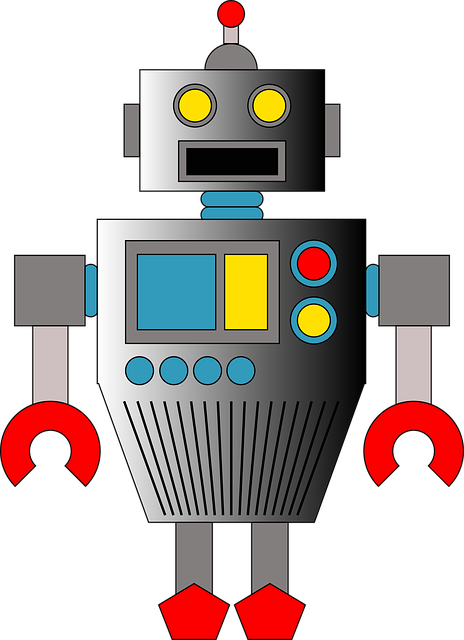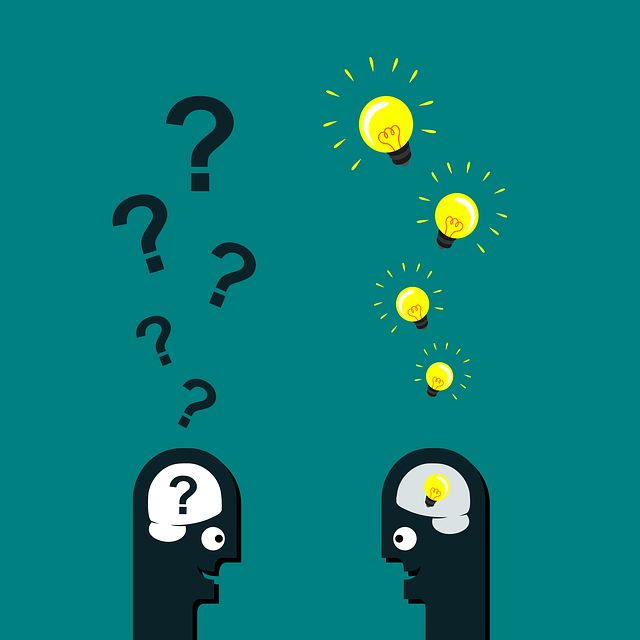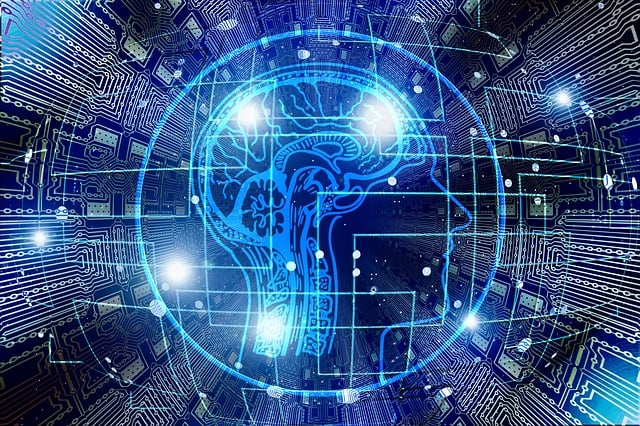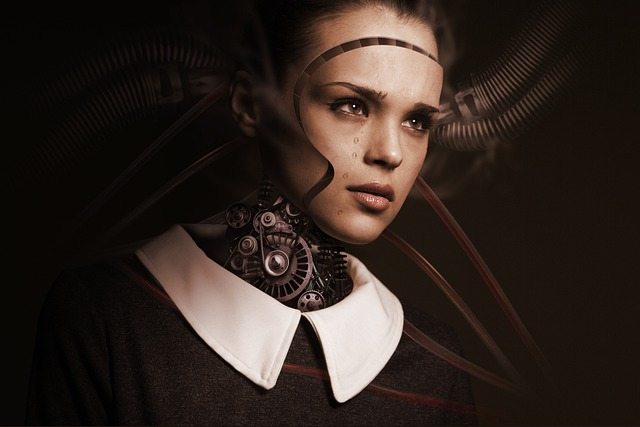Deep learning has revolutionized the field of artificial intelligence, and the latest development in this space is DALL·E, a deep-learning image generator. With DALL·E, users can produce images generated from text prompts with incredible accuracy and realism. It’s an exciting new technology that offers creative possibilities for artists and developers alike. In this blog post, we’ll explore what makes DALL·E so special, discuss how it can be used for generative art projects, and provide some best practices for working with it. We’ll also take a look at how it’s changing the AI landscape as we know it. So let’s dive right in to learn more about this revolutionary technology!
What is DALL·E: A Deep-Learning Image Generator?
DALL·E (short for “Deep-Learning Attentive Language Learner”) is a state-of-the-art artificial intelligence system initially developed by OpenAI. It is capable of generating images from text descriptions, using deep learning techniques to understand the context and generate realistic images. DALL·E has been used in projects such as the AI art project “dall e mini” and the recently released “dall e 2” which can generate images at and even higher quality. This technology has tremendous potential applications in areas such as computer vision, natural language processing, robotics and more.
The system works by using deep learning techniques to identify the context of a user’s input and then generate an illustration that corresponds to the description. In this way, the AI is able to interpret complex sentences and render images that are accurate representations of what was requested. This technology is incredibly useful in many fields and could potentially revolutionize how we interact with machines.
Recently, OpenAI released DALL·E 2, an updated version of their original AI system which produces even higher quality output images compared to the original model. This further reinforces the potential of this technology being applied in numerous areas beyond its current uses. In addition, researchers are now looking into ways that DALL·E can be employed for natural language processing tasks such as machine translation or understanding human speech.
Exploring the Possibilities of Generative Art with DALL·E

Generative art is a form of art created using algorithms and software that can generate abstract and semi-abstract images. It has been around for decades, but with the recent advances in deep learning technology, new possibilities have opened up for artists to explore the potential of generative art.
DALL·E (Debilitatingly Large Language Model · Expert Edition) is a state-of-the-art language model developed by OpenAI’s team of researchers. This model has enabled the creation of stunning artwork composed of words, phrases, images, or shapes which are generated from a text prompt. DALL·E can be trained on various datasets including books, articles, image captions, or even movie scripts to generate visually pleasing artwork from user’s text input.
The power of DALL·E makes it possible for artists to experiment with generative art in exciting ways. For example, when an artist supplies an image as input to DALL·E they can create a generated landscape scene with diverse elements such as hills, trees, rivers and mountains all produced through the AI system. Additionally, if one wishes to produce a portrait they can simply type in words describing the person they would like to draw and DALL·E will automatically generate an abstract portrait based off these words.
Not only does this model allow artists to create unique works of art quickly and easily, but it also encourages creative exploration by those who may not have the technical skills or experience to build their own algorithms. By providing a platform for creativity without the need to learn complex coding systems, DALL·E has liberated a new generation of creatives.
The possibilities are seemingly endless with this technology – allowing for creatives all over the world to explore the potentials of generative art in ways never seen before through traditional methods. Since DALL·E is open-source, anyone with access to a computer can begin experimenting with generative art almost immediately. Artists have already begun showcasing their work online, inspiring others to join in on this technological revolution and explore what is possible when combining artistic expression with artificial intelligence.
How to Use DALL·E for Creative Projects

Since DALL·E just takes text input and creates images you should have an idea what you want to tell it. When crafting your text prompt, it is important to keep it simple yet descriptive so that the AI can interpret it accurately. You should include appropriate details such as color, size, shape and objects in order to give the AI more information about what illustration you want created. Additionally, try to use more unique words instead of generic ones in order to make your description more interesting and expressive.
Once you have created a text description for the image you want generated by DALL·E, send the request off to OpenAI’s API and wait for the response. The response will typically include several generated images from which you can select one or more that best matches your original description. Once selected, these images can then be used as part of any creative project or artwork you are working on. DALL·E also has some additional features which may be useful for creative projects such as its ability to generate high-quality images at a much faster rate than traditional methods such as hand drawing or digital painting.
Additionally, since all of the generated images are based on text input rather than sketches or photographs they have an added level of flexibility in terms of being able to quickly adjust colours, shapes, text captions and sizes if needed without needing any further editing work done later on. This makes them ideal for creating animations or time-based artworks like GIFs where small adjustments could make a big difference in terms of the overall look and feel of the finished product.
Overall, using DALL·E for creative projects is a great way to quickly generate interesting visuals that would normally take much longer using traditional methods without sacrificing quality or flexibility in terms of making further adjustments afterwards if required. With an ever increasing range of applications across various fields such as graphic design and animation, it’s clear why this AI powered tool has become increasingly popular among both professionals and hobbyists alike who are looking for ways to expand their creativity beyond manual methods while still maintaining a high degree of quality control over their work.
How DALL·E Is Changing the AI Landscape

Unlike traditional AI systems which are typically limited to a single domain or task, DALL·E can handle multiple tasks at once and learn new skills quickly. It has no pre-defined notion of grammar or syntax, meaning it can understand even the most complex sentences and generate responses that make sense in context. This makes it incredibly powerful for generating intuitive answers to questions and responding to user input in natural language.
In addition to its impressive language capabilities, DALL·E is also capable of performing visual recognition tasks with astonishing accuracy. It is able to accurately identify objects from images without requiring any additional training data or labels. This makes it highly useful for a range of applications such as facial recognition and image captioning.
The combination of natural language processing and machine vision capabilities makes DALL·E unique among current AI technologies. It has the potential to revolutionize how businesses use AI for customer service, marketing automation, image processing, recommendation systems and many more applications that involve text recognition or computer vision tasks that require very high accuracy.
Another notable feature of DALL·E is its ability to transfer knowledge from one domain to another using “domain adaptation” techniques. This means it can leverage previously acquired information from other fields such as physics or biology when solving complex problems in new domains. For example, if trained on a chemistry dataset, it could then apply this knowledge when recognizing objects in images related to biology or physics.
Overall, the potential of DALL·E is immense and promises radical changes in how businesses utilize AI technologies for their operations. With its ability to process images accurately without requiring any additional training data or labels and its sophisticated understanding of natural language, DALL·E could become an integral part of many modern business processes within just a few years from now – drastically boosting efficiency while cutting costs at the same time. As AI research continues on this revolutionary technology, it will be interesting to see how much further its capabilities extend over time – ultimately transforming not only businesses but also entire industries worldwide!
Some Things to be Carful for While Using DALL·E

When using DALL·E, it is important to remember that the model is trained on specific datasets and can be prone to errors if used with data that differs significantly from the training sets. Therefore, users of DALL·E should be careful to keep the data they use consistent with the training data. Additionally, while the results generated by DALL·E are often impressive, they may not always be accurate or suitable for any given application. It is important to assess how useful or accurate a result is before relying too heavily on it.
Furthermore, as with other AI models, DALL·E should be used with caution when dealing with sensitive subjects such as those related to politics, race, and gender due to potential biases inherent in the type of data used for training. In addition, since neural networks generate results based on previous learning experiences, their answers can sometimes become distorted if exposed too often to similar inputs which can lead to over-fitting or even incorrect output.
Lastly, it is worth noting that while playing around with DALL·E and producing visuals might seem like an enjoyable activity in itself, actually creating useful outputs require a good understanding of how deep learning works and which datasets are best suited for the task at hand.
Working with such models demands knowledge of how neural networks process information and how best to structure it so that the inputs match up correctly with expected outputs. Otherwise, users risk getting strange results or inaccurate predictions which can undermine the overall effectiveness of their work.
8 Use Cases for DALL·E
Graphic Designers and Developers
DALL·E can be used to create a photorealistic illustration or cartoons of objects or scenes, making it useful for graphic designers and video game developers who want to generate visuals with a high level of detail.
Film Production
DALL·E could help filmmakers create visuals without having to worry about manually gathering assets or spending time on tedious tasks like masking out elements in a scene. The AI model can quickly generate artwork when given a text description. For example, a producer could easily ask for a “desert landscape with cactus,” and DALL·E would be able to produce an image that looks real enough to place into a scene without having to worry about finding art assets or creating them from scratch.
Architecture
DALL·E is great for brainstorming new ideas. Firms can use it to quickly prototype new concepts for buildings by feeding in reference images and having DALL·E modify them according to their desired specifications. This makes it easier for firms to explore different design options before committing resources towards full-fledged development. Furthermore, its natural language processing capabilities make it possible for architects to give voice commands that can be translated directly into actionable output.
Art Collection
By using DALL·E, art galleries and dealers can create custom collections of artwork based on a customer’s preferences or specific themes they’re interested in. For example, if someone wanted an abstract painting with bright colors, they could specify those parameters and then receive a selection of digital paintings that meet their requirements. The system’s speed also makes it invaluable when searching for new trends in the art world or responding quickly to requests from customers who want something unique.
In addition, DALL·E can also provide interesting visual insights into the history of various movements in art history such as surrealism or impressionism. Through its analysis of millions of images from around the web, it can accurately identify works that match certain styles defined by these movements which can be beneficial for art historians looking for new information about these topics as well as collectors looking for pieces that reflect these traditions.
Marketing
Marketers could use DALL·E’s image generation capabilities as part of their marketing campaigns by creating visuals that directly connect with their message or product launch. Marketers could take advantage of this ability by generating multiple variations of an image or even create visuals based on user inputs (e.g., surveys). This allows them to craft visuals tailored specifically for their target customers while also helping marketers save time and money when creating visuals for campaigns or product launches.
Robotics
It has applications in robotics too, being able to use its generated images as a way for machines to interpret their environment more accurately than ever before by providing them with data that is easier for them ‘see’ and understand than if they were looking at real-world environments directly through their cameras or sensors.
Research
For researchers working on projects that require analysis of large datasets such as those generated by telescopes scanning deep space, DALL·E could provide a powerful tool for creating detailed visualizations from these datasets quickly and accurately which would aid our understanding of what lies beyond our solar system even further than we do today.
By utilizing its capabilities, astronomers and astrophysicists can quickly analyze large datasets with increased accuracy, while also being able to generate visualizations that are more detailed than ever before. With these visualizations, scientists are better able to explore and understand the universe beyond our solar system in ways that were never possible before. This could lead to groundbreaking discoveries about the composition of the universe, as well as finding new planets or extraterrestrial life forms that may exist far beyond our own star system.
Education
Finally, it could also have educational applications – from providing students with vivid 3D representations of concepts such as electrical circuits or chemical structures in science classes; to giving history lessons a new lease on life by enabling teachers to bring past events back into reality via photorealistic recreations; or simply bringing boredom out of classrooms across the world through customized interactive games based on each student’s interests – DALL·E certainly holds the potential for revolutionizing the way we learn in many different ways!
Takeaways
DALL·E is an amazing new technology that has the potential to revolutionize many aspects of our lives. As more people become aware of its capabilities, it will undoubtedly continue to shape the future of deep learning in exciting ways. We have already seen how DALL·E can be used for generative art projects and other creative endeavors, but we are just scratching the surface when it comes to what this powerful tool can do.
With further research and development, we could soon see a world where humans use AI-generated images as part of everyday life – something that would have been unimaginable just a few years ago! The possibilities with DALL·E seem endless, so let’s keep exploring and discovering all that this incredible technology can offer us.

Leave a comment